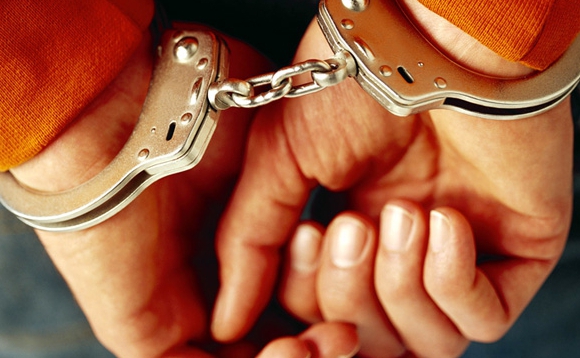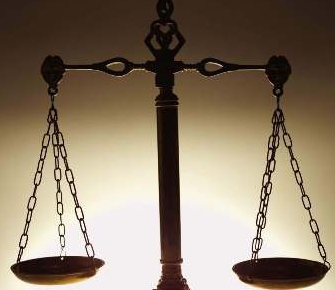A crime is a public dangerous act committed by a person or group of people, prohibited by criminal law under the threat of punishment. To prove the fact of committing an illegal act, the criminal law uses the corpus delicti. The definition of what constitutes a crime is absent in the Criminal Code. The wrongfulness of an act is established by formulating the corpus delicti. It follows from the fact that each composition of an illegal misconduct consists of a set of signs. And they already characterize him as a crime. A separate concrete composition of an illegal act formulates its own type of misconduct.
So the concept corpus delicti contained in various scientific sources, but not in the Criminal Code. Therefore, the issue of this may be debatable. Although it is from the legislative definition of the conditions and grounds for criminal liability, the definition of crime and signs of specific misconduct, the concept under consideration is formulated.
The corpus delicti in criminal law is a combination of subjective and objective factors. They define a public dangerous act precisely as a criminal event. The totality of signs sufficient and necessary to bring to justice the guilty person for a certain crime and regulated by a specific norm of the Criminal Code is a specific corpus delicti.
Crime structure: concept, types, meaning
The composition of a criminal act can be considered not only the totality, but also a system of signs that are characterized by internal unity. They can be grouped into separate elements that make up the structure. What is it? The structure of the composition is an invariable system of relations between its elements.
The concept of corpus delicti, stemming from the realization of the illegal act itself, is a generalization of the signs. And they are already taken separately from the corpus delicti. Actually, they contain uniform features for all the offenses stipulated by the criminal law, which have a special essence in criminal proceedings.
The corpus delicti in criminal law has its own meaning. He acts as the basis for the emergence of responsibility. It is also a prerequisite for the qualification of an illegal act, an occasion for sentencing by a court or other measures provided for by criminal law, a guarantor of compliance with the law.
The most important legal prerequisite for criminal liability determines the concept of corpus delicti and its significance. This is because the prosecution of a person occurs on the basis of all signs of crime. And in each of them has its own individual motive.
There are several types of illegal acts:
- Main.
- Privileged.
- Skilled.
They have such differences:
- According to the level of public danger.
- In its structure (complex and simple).
- According to the characteristics of the objective side described in the law, that is, the legislative structure (material, formal and truncated).
The basic corpus delicti is expressed in the essence of the illegal act, as well as in its specific features. Privileged composition is a motive with extenuating circumstances.Simply put, he gives the criminal act the least public danger. Qualified composition is the motive, including signs that increase the level of social danger of the act.
The legal corpus delicti in the Criminal Code does not always provide for the sequence of features of all corpus delicti. For example, there are norms exclusively with the main motive of the act. This article is about genocide, where the norm consists of only one part.
The simple composition of an illegal act indicates the signs of a crime at the same time. In a complex motive, everything points to two forms of guilt, several objects, acts, etc. The complex composition has its own variety. This is an alternative form, characterized by several acts or several consequences, the presence of which is sufficient if there are other necessary signs for the onset of responsibility.
The material composition of an illegal act is a crime that is completed from the moment of occurrence of public dangerous consequences. The formal composition is characterized in that the criminal act is completed from the moment the dangerous public act is performed. The truncated corpus delicti is an unlawful act considered to be completed from the moment of the threat of the likelihood of harm from the commission of certain actions regulated by the disposition of criminal law norms.
The crime in criminal law includes several types. This is an independent kind of illegal act. The composition of the danger in it is meant to be completed from the very moment when a socially dangerous misconduct occurred that poses a threat of the consequences specified in the legislation.

So, the concept and types of corpus delicti help to correctly qualify a criminal action or inaction, determine the degree of damage or harm, the severity of the event, etc.
Grounds for prosecution in criminal law
A committed act that has signs of a criminal offense under criminal law is an exhaustive basis for holding a suspect or accused person liable. And in this case, the concept of corpus delicti helps to give the right qualification of the act. Crime classification means a criminal law assessment of a particular socially dangerous act.
Qualification of an illegal act
The determination of the corpus delicti in terms of its qualifications carried out by the relevant authorized persons is reflected in the relevant procedural documents. The final qualification of a criminal act is given by the court. Therefore, the conclusions of this body must be motivated. Namely: in order to declare a person guilty of an illegal act, the court is obliged to be guided by signs related to the evaluation categories. This is the severity of the consequences, the significance of the damage, the official position of the defendant, etc. In the narrative of the sentence, it is necessary to cite the circumstances that became the basis for the court to conclude that this symptom was present in the committed criminal act.
The concept of signs and elements
Signs of crime are specified and indicated properties of the act. They allow you to separate from each other the compositions of various misconduct. The signs of a criminal offense are strictly individual. The elements in these motives are always the same. Actually, this is the presence of subjective and objective signs that reveal the concept of corpus delicti. Both its elements and signs are an integral part of the illegal act itself. Without their presence, the crime itself as a fact of an unlawful act cannot be.

For example, the composition of theft in most of the signs coincides with the crime of robbery, since this category of misconduct belongs to the theft group.There are differences between them. They are signs of a criminal act, that is, robbery is an open way to steal property, and theft is secret.
Elements of the composition of an illegal act
The concept and elements of corpus delicti are not contained in the Criminal Code of the Russian Federation. Where are they described? In criminal law, elements are understood as necessary components of the structure of the criminal act itself. They correspond to the various sides of a socially dangerous action or inaction (object, subject, objective side, subjective side).
The object of unlawful misconduct in criminal law is public relations protected by law. At the same time, an encroachment occurs on them. A sign of an object is the subject of a criminal act. This is what the attacker is doing and what is being done harm.
The objective side is socially dangerous behavior of a person. It is expressed in the external manifestation or occurrence of a threat of harm. Signs of the objective side include the following factors:
- Socially dangerous act, expressed in action or inaction.
- The coming socially dangerous consequence.
- Method and means of carrying out a criminal act.
- The causal connection between the consequence and the misconduct, the place of its commission, time, situation.

The subject of a crime is the natural person who committed the act. Provided that it is able to bear responsibility for its commission. In criminal law, the subject is not legal entities, but solely individuals. To attract a person as a subject, he must reach the age of criminal responsibility.
The subjective side of the criminal act (the inner side of the crime) is the mental activity of the person who committed the offense. What defines her? Signs of the subjective side are motive, guilt and purpose. There are two forms of guilt: negligence and intent.
The criminal law value of the object of an illegal act
The corpus delicti is a combination of certain signs, which include the object of the act. It is a mandatory part of the reason for establishing liability, as it is a necessary element of any corpus delicti. With the correct definition of the object, it is possible to establish the social danger of the encroachment, the legal nature of a specific illegal act. This allows you to correctly qualify the act of the perpetrator. Sometimes the object on which the attacker encroaches allows you to distinguish a criminal act from other offenses, and also to separate one offense from another.
Types of crime
The concept of crime as objective features includes the object itself. It is on him that the attacker encroaches. This object, depending on the level of concretization, is general, generic, species, and direct.
A common object is a collective concept and acts as an association of public relations protected by the norms of the Criminal Code. The significance of this concept lies in the fact that it allows you to determine the fact of whether the act was criminal or not.
A generic object is considered part of a common object. It is a group of homogeneous factors that are similar in content. The generic object is the basis for dividing the Special Part of the Criminal Code into sections. An example is the part under consideration, in which there is a section "Crimes against the individual." It contains a description of those illegal acts in which the main purpose of the assault is a person’s personality.

A species object is considered an integral part of a generic object. The considered factor unites a certain circle of related objects, but narrower. The view object within the sections are chapters.The immediate purpose of the crime is public relations protected by a certain norm of the Criminal Code. For example, article 105 “Murder” of the Criminal Code of the Russian Federation. The corpus delicti in terms of determining the immediate object determines the life of a person. It is the establishment of the immediate object that makes it possible to correctly qualify an illegal act.
Multidimensional compositions of illegal acts
The corpus delicti is an expression characteristic of the illegal act of internal relations of its constituent elements. These include the object of misconduct, which may not always be one. It often happens that a criminal attack against one object is connected with causing harm to other persons. In such a situation, the legislator forms a multi-objective corpus delicti. This implies two or more immediate goals in it. In multidimensional compositions of a criminal offense, the main and additional objects of illegal encroachment are distinguished. The main goal is the one that the legislator seeks to protect in the first place. All other objects are optional. This does not mean that they are less valuable. The selection of the main object is aimed at the exact choice of the criminal law norm in assessing a socially dangerous act.
For the use of a multi-objective corpus, it is necessary to establish that the criminal act infringed simultaneously on all the objects specified in the crime. For example, the considered species classifies robbery. In it, the main object is the property of others, and the additional one is human health or life. And they are no less important.

Additional objects are divided into necessary or optional factors. For example, as part of a robbery, human health and life are a necessary additional object that must necessarily suffer from a crime along with the main species. If the encroachment on someone else’s property was not accompanied by harm to human health or life, then the composition of the robbery is absent. To apply the composition with an optional additional object, it is enough to establish that along with the main one, at least one optional factor was damaged. For example, the main object in hooliganism is public order. Its additional optional object is a person or property.
Signs of a crime
The composition of the criminal offense contains generalized legally significant properties of an illegal act of a certain type, that is, its features, traits, quality. This is all expressed in the composition of the crime and its symptoms. How to identify them?
Signs are mandatory and optional, subjective and objective.
Factors relating to the subjective side of a criminal act and its subject are subjective. And the signs related to the objective side and the object are objective.
Mandatory factors are those that are present in all corpus delicti. These include: guilt, social dangerous act, relationships, sanity, age.
Other signs are optional factors, that is, additional: the subject of the offender’s encroachment, consequences caused by a criminal offense, causation, purpose, motive, etc. This also includes special features of the subject of the criminal offense. And this allows him to be considered a special subject.
As part of a crime containing the same attribute, the factor under consideration cannot be optional and mandatory at the same time.
Crime elements
The concept of corpus delicti is of particular importance. It is a means of comprehending the truth in certain criminal cases. The corpus delicti helps in the implementation at the legislative level of the transfer of socially dangerous acts into a group of criminally wrongful.Any structure has as its goal to perform certain functions: guarantee, demarcation, procedural and fundamental.
The fundamental function defines the composition of a criminal act or omission as the only acceptable basis for liability.
A delimiting function is designed to separate criminal acts from one another. She must also distinguish between crimes and offenses.

Prevention of unjustified criminal prosecution of a person in the case when there are no signs of composition in the act provides a guarantee function. In the investigation of crimes, the establishment of all four constituent elements of the composition is considered a guarantee of compliance with the law.
The procedural function is responsible for determining the boundaries within which a crime investigation is being conducted. In the course of all this, all the elements and signs of the corpus delicti are determined, the necessary evidence is collected. And they are already an occasion to bring the perpetrator to justice.
Difference concepts
The concepts of corpus delicti and crimes are inextricably intertwined. But they are not identical. A crime is a specific socially dangerous guilty human behavior committed in objective reality. And it is prohibited by criminal law. Now we understand what constitutes a crime. This is the general realization of an illegal act. And all this is already reflected in the criminal law. For example, dozens of thefts occur in the country, which are evaluated according to the same composition provided for 158 articles Criminal Code of the Russian Federation.
So, we examined what constitutes a crime in Criminal Law, what are its classifications.








